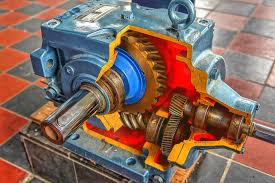Mobile:+86-311-808-126-83
Email:info@ydcastings.com
English
plumbing pipe end caps
Understanding Plumbing Pipe End Caps Essential Components for Efficient Plumbing Systems
Plumbing is a crucial aspect of any building, whether residential or commercial. Among the myriad of components that make up plumbing systems, pipe end caps play a vital role in ensuring the functionality and longevity of these systems. Although they may seem like simple accessories, understanding their purpose, types, and applications can greatly enhance your plumbing projects.
What are Plumbing Pipe End Caps?
Pipe end caps are fittings used to seal the open ends of pipes. They are designed to provide a secure closure, preventing substances from leaking out or contaminants from entering the pipe. Available in various materials, including PVC, metal, and copper, these caps come in different sizes and shapes to accommodate diverse plumbing needs.
Types of Pipe End Caps
1. PVC End Caps PVC end caps are widely used due to their affordability and resistance to corrosion. They are ideal for water systems and are lightweight, making them easy to work with. PVC is also non-toxic, which is crucial for drinking water applications.
2. Metal End Caps Metal caps, often made of stainless steel or galvanized steel, are favored for their strength and durability. They are suitable for high-pressure systems and environments where heat resistance is necessary. However, they may be more susceptible to corrosion compared to PVC caps.
3. Copper End Caps Copper caps are typically used in HVAC and plumbing applications, notably in systems where high temperatures are present. They provide excellent conductivity and have antimicrobial properties, making them a reliable choice for water supply lines.
Applications of Pipe End Caps
plumbing pipe end caps

Pipe end caps serve various applications across different industries
- Water Supply and Drainage In plumbing systems, end caps are used to terminate pipe runs or to seal off unused lines. This helps in maintaining the integrity of the system and ensures that water flows efficiently without leaks.
- Manufacturing and Industrial Use In manufacturing settings, end caps are often utilized in assembly processes. They can protect the interior of pipes during transportation and storage, preventing dust and debris from contaminating them.
- Construction In construction projects, end caps are crucial for temporary closures in plumbing lines. They provide ease of inspection and maintenance, allowing workers to efficiently manage pipe systems before final installation.
Installation and Maintenance
Installing pipe end caps is generally straightforward. Ensure that the pipe ends are clean and free from debris before applying the cap. For threaded caps, use appropriate pipe joint compounds or Teflon tape to achieve a tight seal. For solvent-welded joints, follow the manufacturer's instructions for the adhesive application.
Maintenance involves periodic inspections for signs of wear, corrosion, or leaking at the cap joints. Replacing damaged caps promptly will ensure the integrity of the plumbing system and avoid potential costly repairs down the line.
Conclusion
In summary, plumbing pipe end caps are fundamental components that play an essential role in sealing and protecting piping systems. Understanding the different types, materials, and applications of these caps can aid in making informed decisions for plumbing projects. Whether you're a DIY enthusiast or a professional plumber, using quality end caps ensures the longevity and efficiency of your plumbing installations. Investing in the right fittings not only prevents leaks but also simplifies future maintenance, making them an indispensable part of any plumbing system.
-
Materials Used in Manufacturing Cap End Pipe FittingsNewsNov.24,2025
-
Material Properties of CF8M CastingNewsNov.24,2025
-
How to Inspect Pump Cap Ends for DamageNewsNov.21,2025
-
Backward Curved Impeller – Efficient Airflow Solutions for Industry | YD CastingsNewsNov.21,2025
-
Automobile Water Pump - Efficient, Quiet, Durable & ElectricNewsNov.21,2025
-
Impeller for Pumps – High-Efficiency, Durable, OEM-ReadyNewsNov.21,2025











